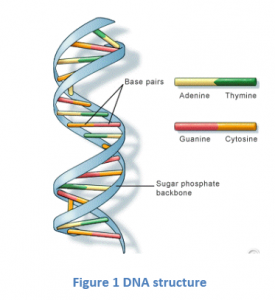The activities performed by living organisms involve reactions of certain organic compounds. Such compounds are known as biomolecules. Carbohydrates, proteins, vitamins and lipids are examples of some common biomolecules.
Important Questions For Biomolecules
The frequently asked questions pertaining to JEE from this topic are as follows:
Question 1: What are carbohydrates?
Answer: Carbohydrates are biomolecules containing carbon, hydrogen and oxygen atoms. They are the source of energy for living beings. We can encounter carbohydrates at every turn of our life. For example, the paper that we use daily, the wood, etc. contain cellulose. In terms of biomolecules, the synonym of carbohydrates is saccharides which include a group of sugar, starch and cellulose. Carbohydrates are classified as:
- Monosaccharides – They are the simplest carbohydrate and cannot be hydrolyzed to smaller carbohydrates. Examples: glucose, fructose and galactose.
- Disaccharides –Two monosaccharides joined together are known as disaccharides. They are the simplest polysaccharides Examples: Sucrose, lactose and maltose..
- Oligosaccharides – They comprise three to ten monosaccharide molecules and are mostly linked by o – glycosidic bond.
- Polysaccharides – They are a long chain of monosaccharides that are bounded by glycosidic linkage.
Question 2: What are Amino acids?
Answer: Amino acids are biomolecules which contain two functional groups namely: carboxylic acid and amine. They are the derivatives of carboxylic acids in which one hydrogen atom of a carbon atom is substituted by an amino group. The key elements of an amino acid are carbon, hydrogen, oxygen and nitrogen through other elements may also be attached. Amino acids are classified according to the location of the structural-functional groups such as alpha, beta, gamma, or delta. Amino acids are the building blocks of proteins. Proteins are the second largest component of muscles, cells or tissues in the human body.
Question 3: Explain the term nucleic acid.
Answer: Nucleic acids are important biomolecules which are present in all the living cells. They are also known as polynucleotides as they are the repeating structure of nucleotides. The nucleic acid is composed of a phosphate group, sugar and nitrogenous bases. Types of nucleic acid:

- RNA (ribonucleic acid) – Has a single-stranded helix structure.
- DNA (deoxyribonucleic acid) – Has a double-stranded helix structure.
- Artificial nucleic acid analogues – These have been designed and synthesized artificially by the chemists. They include peptide nucleic acid, morpholino and locked nucleic acid, glycol nucleic acid and threose nucleic acid.
Video Lessons
Biomolecules and Polymers

Peptide Bonds

Biomolecules – Concepts and Important Questions

For more information on this topic or JEE install BYJU’S -The Learning App.
Comments